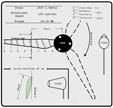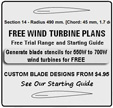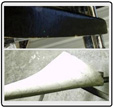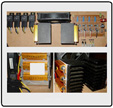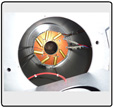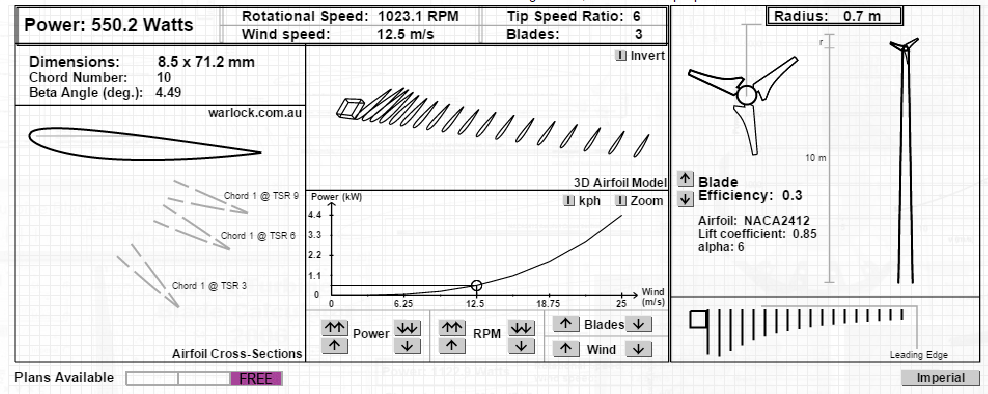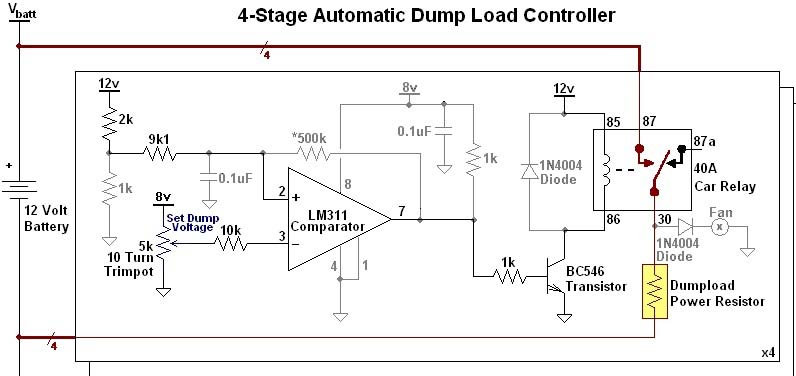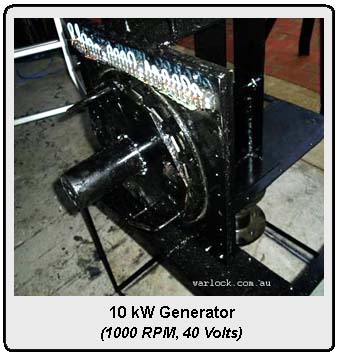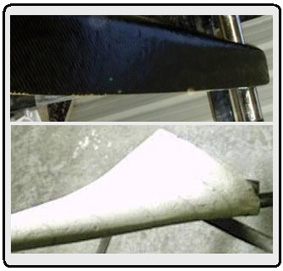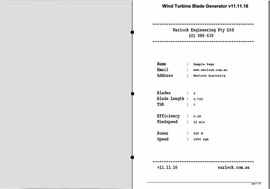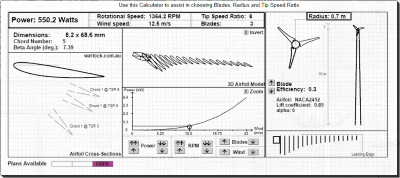







Enable Ads for www.warlock.com.au


Background summary of selected projects


Welcome to Warlock Engineering

POPULAR PAGES

SPONSORED ADVERTISEMENT

There are some advantages to using plastic composites to produce blades and moulds, with some improvements in accuracy for blades that taper and twist. The increased strength and rigidity of materials maintain blade shape at high velocity and throughout the weathering process. Materials needed for construction are reduced as well as the blade weight.



Frequently asked questions about plan orders, blade design, electrical work and generator matching can be found on our Q&A pages.





Back to information about.....

Turbine Blade Calculator Software
The measured power curve for your generators RPM should closely match the effective blade power at the optimal TSR. During testing, we adjust the TSR at each wind speed by changing the load resistance to measure the blade power vs TSR.
Designs that involve rectifying circuits allow current to flow into the battery after a certain RPM and voltage are reached. The turbine spins freely until the generator voltage exceeds the battery voltage. Circuitry is used to divert the current away from the battery input and into the dumpload to protect the battery and other circuitry (inverter and other appliances) from overvoltage.
Details of the microwave reactor design are given along with the 2.45 GHz RF simulation used to assess the expected leakage from the reaction chamber.

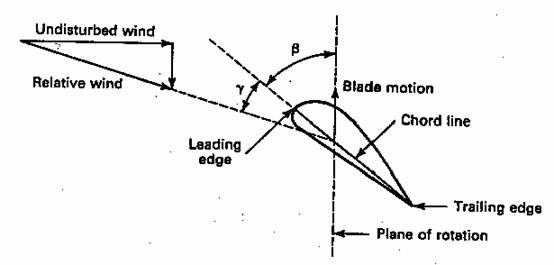
Wooden blades without twist or taper are fast to manufacture without a large investment in prior planning. Custom taper and twist vs length are possible to construct using wood, although the closeness to the ideal accuracy in the final product can be difficult to assess. Changes in blade shape, caused by deformation of the wood grain during further moisture losses are made worse by exposure to heat and weather. Inconsistent wood grain properties make hub attachment a larger concern than is immediately apparent, as the wood is smaller at this point and holds both the blade weight and force during operation. Turbines with a large number of blades or high TSR can be too thin to manufacture from wood, requiring additional coating in fibreglass composites.
Although fibreglass composites have superior strength, the cost effectiveness of wood carved blades currently can't be matched, along with the ease of access to resources. Appropriate wood types can be used to build wind turbine blades if the correct grain and drying process has been followed, as this provides some confidence that the finished product will be robust.
Articles in PDF format
Design, simulation and construction of a
Loss factor measurements for organic
solvents at frequencies 0.1 - 40.0 GHz.


Wind Turbine Articles in PDF |
| BLADES: • 1.4 Metre Diameter 3-Blade Wind Turbine Construction [PDF] • 10 kW (13 m/s), 5 Metre Diameter Carbon Fibre Blades for Wind Turbine [PDF] |
| BLADES AND GENERATOR: • 1.8 Metre Diameter Carbon Fibre Wind Turbine Blades and Generator [PDF] |
| GENERATOR: • 10 kW, 15 Phase Axial Flux Pancake Generator for 2-Blade Wind Turbine [PDF] |
An economical fabrication process is a major design consideration for turbine blade construction. The construction is based on the available materials as well as your own experience. Plastic composites are often used, prepared by the even packing or layered addition of fibre glass or other fibres that have been saturated in an amount of the polymer resin, soon after the initiation process has begun.
After initiating polymer growth, the plasticising resin begins to harden into a mechanically robust solid composed of both plastic and structural fibres. For small experiments, wood is still considered as a favourable option since waste is easily managed.
The mechanical properties of both the plastic and fibres contribute to the overall blade strength, each having an optimal percentage contribution for best results.
Fibreglass is a composite material made using a chemical resin in combination with solid fibres, providing superior strength from only a thin layer. Construction methods using composite materials allow the blade weight to be significantly reduced leading to faster start-up and safer operation. The mixture of resin and fibres are shaped and gradually undergo a 'curing' process to form a plastic polymer with fibres distributed throughout the plastic as a mesh.
Fibreglass Blades:
After gaining access to efficient turbine blades, the selection of a generator follows. Alternately, after gaining some experience, the technique for turbine blade manufacture is chosen depending on the availability of suitable generators that function in weathering conditions, have known power output and rated operating velocity (RPM, speed in revolutions per minute).
Matching Blades and Generators:
The power available for production using your customised turbine specifications will give a unique profile for power output with increasing wind speed in each individual case.
The accuracy of airfoil dimensions and angle at each position along the blade is limited by experience and technique during construction. Plastic composite materials are more amendable in case of errors and the accuracy can be monitored and corrected at many stages throughout construction
In areas where the wind is intermittent, a small amount of power can be used to start up the generator to reach the operating TSR over a shorter time period than normally taken using the force of wind alone. This allows power to be converted as quickly as possible after the wind has reached the speed required to operate the turbine for power generation.
Electronic means of adjusting or stopping the wind turbine operation in high wind speed include a circuit system for braking. This is needed if the generator begins to produce overvoltage. Mechanical methods to avoid operation during high wind involve mechanical furling systems.
The generator 'voltage per RPM' will determine the load that can be used to draw current from the entire generating system. Using a low resistance load will temporarily draw high current at the moment that the load is applied. A rapid reduction in voltage occurs until the generators RPM is moving current that will convert the same power from the blades, but at a new RPM. If this new generator RPM causes the blades TSR to fall below the optimal range for producing 'lift', efficiency is greatly reduced. In this case, the generator speed is insufficient to produce power, causing the turbine to 'stall'. If a load resistor is present in the generating circuit during 'start-up' the turbine will fail to start, even in high wind speed. The blades have not yet reached the optimum TSR and high efficiency needed to maintain power production.
Heating by Microwave Energy:
Microwave heating has common household and industrial uses, although its practical application is both facilitated and limited by the interaction with materials at a molecular or atomic scale. The use of microwave radiation to supply thermal energy for chemical reactions has been studied, along with reactor vessel design. Measurements for the interaction between microwave radiation and organic functional groups have been conducted at wavelengths other than the standard commercial 2.45 GHz operating frequency. Dielectric loss measurements are used to compare materials.
Organic chemicals containing 'non-metal' atoms are joined by atomic bonds. Vibrations in all directions in space occur if the molecule encounters thermal energy (heat). When the chemical structure contains differences in electron density or 'polarity', the absorption of microwave energy can occur. Microwave absorption of organic reagents and solvents are graphed over a range of radio frequencies (RF).
About our web site.
Research conducted by Warlock Engineering, whether it has been of past interest or ongoing in development, is documented on our web site as time permits. Improvements resulting from reflective development and community support are added progressively as interest grows. This allows us to provide better resources online. Some of our interests are detailed here on the site index along with new or popular web page content.
Wind Turbine Blade Manufacture:
Manufacture of wind turbine blades involves making a choice about the materials used and this can determine your appropriate working techniques.
The weight of the final blade set should be considered. The effect of blade weight and radius contribute towards a combination of stresses on the generator and hub. Increases in fatigue are caused by vibrations of a heavier mass and a longer time is needed for a heavy object to reach high velocity due to the forces of the wind. Failures associated with heavier mechanical devices are also more difficult to manage.
Consistency of the blade strength across the span of the radius is more predictable when a single piece of material is used for the entire length of blade construction. Designs that have a wide chord length closer to the root section contribute a large surface area, making the construction process more expensive, but can provide a greater blade efficiency. The surface area (aspect ratio) contributed by all blades relates directly to the maximum power that can be captured. Using a surface area less than a solid disc is required for the conversion from 'linear' kinetic wind energy into rotational movement needed for power generation.


FREE
Sample chord
sections can be
generated for
blades between
0.70 to 0.80 m (550
Watts to 710 Watts).
Design custom blades for your generator and calculate power output at each wind speed.


NEWS & UPDATES


Free plans for 500 W blades
with each purchase.
